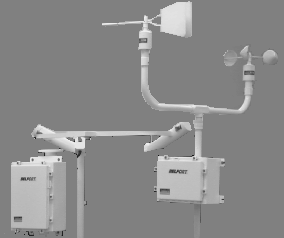
 |
METAR OBSERVATION CODE |
The Federal
Meteorological Handbook (FMH) Number 1, titled Surface Weather
Observations and Reports, dated (latest), is the difinitive United
States standard for the Aviation Routine Weather Report/Aviation
Selected Special Weather Report (METAR/SPECI) code formats.
| A Quick Key to Decoding METAR Observation Reports |
| Page 1. | General Information | Page 8. | Observing and Coding Runway Visual Range Group | ||
| Page 2. | Standards applicable to all stations | Page 9. | Observing and Coding Present Weather Group | ||
| Page 3. | METAR/SPECI Code Format | Page 10. | Observing and Coding Sky Condition Group | ||
| Page 4. | Criteria for SPECI | Page 11. | Observing and Coding Temperature and Dew Point Groups | ||
| Page 5. | Coding type, station ID, date/time, report modifier Groups | Page 12. | Observing and Coding Pressure Group | ||
| Page 6. | Observing and Coding Wind Groups | Page 13. | Observing and Coding Remarks Section | ||
| Page 7. | Observing and Coding Visibility Group | Page 14. | Coding the International METAR format | ||
 GENERAL
GENERAL
In the World Meteorological Organization method of numbering code forms, each
code form bears a number preceded by the letters FM. This number is followed
by a Roman numeral to identify the session of CSM (Commission for Synoptic
Meteorology) or of CBS (Commission for Basic Systems) which either approved the
code form as a new one or made the latest amendment to its previous version. A
code form approved or amended by correspondence after a session of CSM/CBS
receives the number of that session.
An indicator term is used to designate the code form colloquially
and is therefore called a "code name." In some cases, this code name is
included as a symbolic prefix in the code form and during transmission ensures
ready identification of the type of report.
The
METAR code (FM 15-IX) is the international code to
report routine, hourly weather conditions at air terminals.
SPECI (FM 16-IX)
is the name of the code for an aviation selected special weather report.
The METAR code is a precise, easy to read code
which
provides a great deal of information. The code format is also used by most of
the world to provide pilots with trend forecast weather at air terminals to
which they are flying. This code has been adopted as the international
code for reporting weather conditions by all nations.
On 1 July, 1996, the United States converted to
the METAR format. The United States has filed
with WMO certain exceptions to
the international METAR format that reflect
national observing practices which
differ from practices outlined in the WMO Manual on Codes No. 306. These
exceptions are identified in the discussion of the separate sections of the
METAR code.